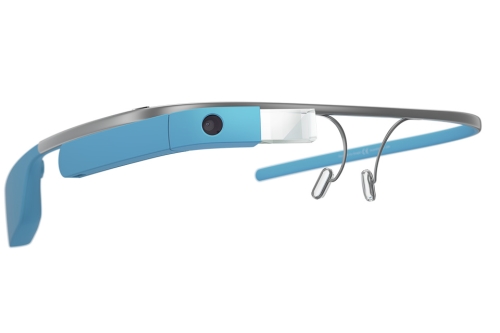 Google is offering its Google Glass Explorer edition for sale again starting on Wednesday. This is the second time Google has offered the product for sale to the public, while supplies last. Currently there is only one model in a single color being offered, and anyone can scoop them up by shelling out a spare $1500.
Google is offering its Google Glass Explorer edition for sale again starting on Wednesday. This is the second time Google has offered the product for sale to the public, while supplies last. Currently there is only one model in a single color being offered, and anyone can scoop them up by shelling out a spare $1500.
Tag Archives: Google Glass
Google Glass Guard
If you were an early adopter of Google Glass, then you’re probably in the market for something more protective than that flimsy case you got! Though the frame is composed mostly of titanium, many users have found that it’s easy to snap a plastic stem connector on the computer side. To secure your precious, this case by Design Libero takes the shape of Google Glass and features a rigid exterior shell and soft, foam and silicone interior. In liquid wood, carbon fiber, or recycled aluminum you can choose the case that best suits your style.
Designer: Design Libero
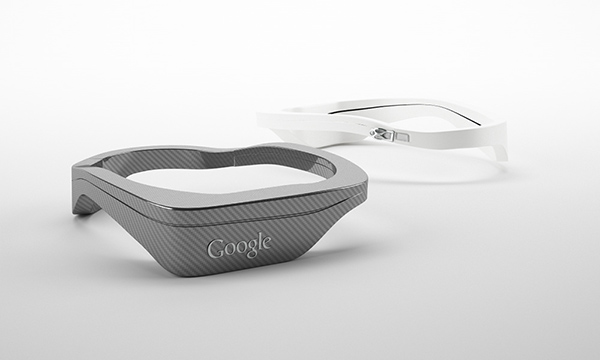







-
Yanko Design
Timeless Designs - Explore wonderful concepts from around the world!
Shop CKIE - We are more than just concepts. See what's hot at the CKIE store by Yanko Design!
(Google Glass Guard was originally posted on Yanko Design)
Related posts:
5 Apps We Want to See on Google Glass
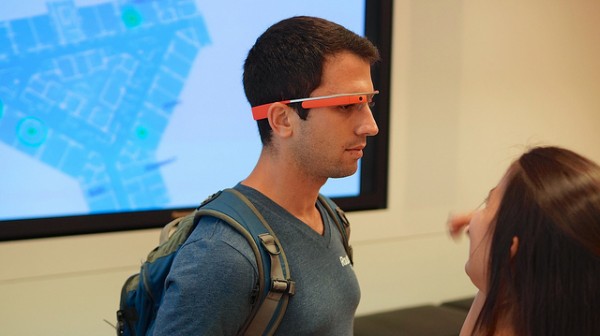
Google Glass is quite possibly the most talked about and long-awaited gadget to capture the attention of tech lovers everywhere. It seems to perpetually remain in beta, and there’s no definitive release date on the horizon, so it’s open to a lot of speculation about exactly what it will be capable of doing.
What we do know about Google Glass is that it will let users “see” the world through new eyes, so to speak. With that said, here are a few apps we would like to “see” through the looking glass that is Google Glass.
Interactive Art
The art world is constantly reinventing itself — and rightly so. Art knows no boundaries; no steadfast rules; and no limitations. So of course if this sweet new technology is going to explode onto the market in coming years. There should probably be an app that integrates the beauty that is art into the marvel that is Google Glass.
If you’re skeptical about how awesome this concept could be, just take a trip to Washington D.C. and check out the Smithsonian Institute to see it in action. The new exhibit is called “Portrait of America,” and it’s by artist David Datuna. It depicts an American Flag covered in eyeglasses, along with four cameras that document visitor reactions. The fun really starts when patrons don Google Glass and the piece comes to life. It’s then that it reveals major cultural and historical events in American history, all the while filming the encounter. It opens up an entirely new realm of artistic possibilities, and we’re excited to see where this goes.
Unmentionables
It was recently announced that there’s an app in the works that actually helps users make their very own customized sex tape. Hello! Why hasn’t this been thought of before? Apparently all you have to do is say “OK glass, it’s time,” and it’ll start recording your special time. You can even tell it to set the mood by dimming the lights and playing music. You can even connect it to your phone and change up the angles. Lastly, in a simultaneously crude and awesome feature, you can tell it to stop recording. The command is “OK glass, pull out.”
The device stores the footage for five hours before it is permanently deleted, making it a discreetly fun way for couples to mix things up in the bedroom.
Health Apps
There are plenty of iPhone and Android powered apps that center around health and fitness. You can find just about anything, from diet tips and tracking to yoga exercises. You can even track your sleep patterns through motion detection. Since Glass is shattering all preconceived ideas about technology, why not up the ante with the health apps?
Let’s see an app that monitors your digestion. It’ll surely take some serious brain power to develop, but how cool would it be to track and test the way your body digests food? This process is responsible for so many physical ailments that it could really make a difference in people’s lives.
In all seriousness, make an app about poop. Though it’s typically the last thing most people want to discuss or research, your poop tells a very in-depth story about your body (no pun intended). How often your bowel movements come, as well as the texture and density of the waste, are all indicators of activity that is going on inside the body. A Glass app could utilize the device’s camera for good by helping people identify major health problems as early as possible.
Customized Video Options
Google Glass has been plagued with a lot of bad press regarding privacy and its built-in video camera. Despite its best efforts, Google has yet to squelch the chatter. Public opinion has become largely hesitant to the newfound technology, finding it intrusive.
Let’s use this superpower for good, shall we? An app that helped users customize their video recording experience could make for very interesting first-hand news accounts. Take Santa Barbara, Calif., newscaster Caroline Lowe, for example, who pointed out that it could be especially helpful for reporting breaking news and severe weather on-site.
We’d like to see a built-in app that allows users to record a fight or disaster straight from their glasses and then sends it directly to Vice for up-to-date news that isn’t going to be censored. This would create very urgent news and make anyone with Google Glass a potential reporter. Since video journalism is on the rise, Vice founder and CEO Shane Smith has recently added a video segment to the already successful news and cultural reporting website. Smith says that, though the terrain of news reporting is ever-changing and uncertain, ”Dialogue always works. That’s what news is. And we’re going to show you what’s going on.”
Honest Advertising
How awesome would it be to live in an alternate universe in which advertising messages actually depicted accurately and honestly what it is they’re selling? This means that bright and shiny commercials for “fresh” and “healthy” fast food and soda commercials would be a thing of the past. Instead of listing the potential side effects of prescription drugs in super fast, monotone voice overs at the end of the spot, commercials would show them in action.
Do you accept the challenge, Google Glass? We want to see an app that shows what we’re really eating. It would have a feature that allows users to take a picture of a food product, and have Glass tell them about it. This would include where and how it was made, it’s actual nutritional information (along with the context), and any chemicals and pesticides that are likely lurking on its surface.
There you have it. Five concepts for sweet apps we’d like to “see” through Google Glass. Though some are more in depth than others, we’re sure they can be brought to fruition with a little finesse. What apps would you like to see available on Google Glass once it’s finally ready for the public? Please weigh in by leaving a comment below.
Buy Google Glass – Today Only
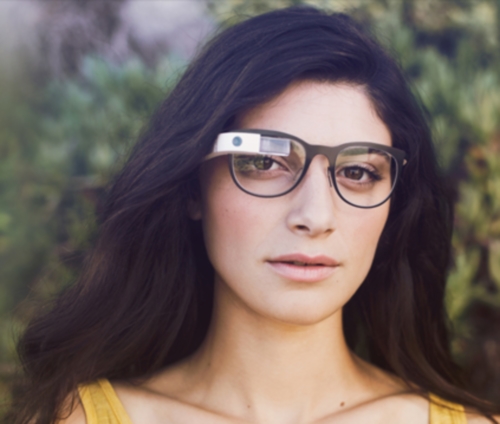 If you’ve been longing to be one of the elite, hand-selected by Google to try out their new Google Glass product, today is your chance. Google has offered Glass up for sale to the general public for one day only.
If you’ve been longing to be one of the elite, hand-selected by Google to try out their new Google Glass product, today is your chance. Google has offered Glass up for sale to the general public for one day only.
Google did not specify how many will be available for purchase today, but did say that they plan to have the product open to the mass consumer market later this year. Today you can purchase Glass and choose from a variety of 5 colors (charcoal, tangerine, cotton, shale and sky), and 5 different frame styles for clear lenses and 3 styles of tinted shades. The extra charge for the frame styles have been waived, but the product itself will set you back $1500.
There are also some Glass accessories available for purchase from Google as part of the purchasing process including earbuds (in different colors), a charger, a clear shield and a couple of case options. The device itself comes with a charger, mono earbud a pouch and the frame.
Google Glass to Get Augmented Reality Features From Layar
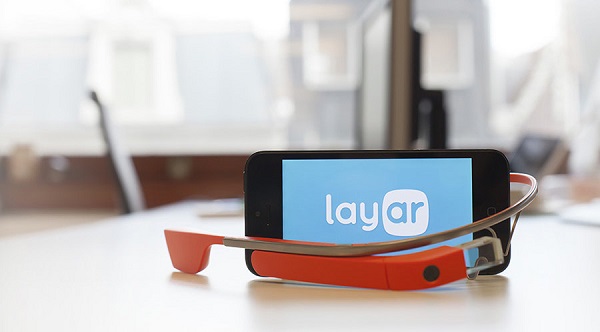
As hype for Google Glass, increases, Layar have announced that they will be bringing both augmented reality and QR scanning features to the device.
Google Glass certainly has many interesting features but how many of them are useful? Does being able to take photos with a pair of glasses and a voice command make the actual process or picture taking any easier or is it just a way to free up your hands when you’d usually use your smartphone? And how about how Glass’ use of Twitter and Facebook add up – is it quicker and more convenient to say tweets and status updates aloud or is it a way of limiting your privacy as you find yourself having to whisper things you could inconspicuously type? These are all things to take into account for potential buyers of the search engine giant’s new gadget and thanks to Layar, the augmented reality specialists, Google Glass is set to get two new features to make it a little bit more useful.
The first of the features, the augmented reality, is somewhat of an unofficial Google Glass application. Those who are lucky enough to have hands-on access with the device can download the beta software from Layar’s website and then install it themselves onto Google’s fancy wearable. While it may sound like a bit of legwork is required, the features it brings are quite impressive, almost making you wonder why Google hadn’t though to include it in the first place. By saying the simple voice command of “OK Glass, scan this” and looking in the direction of say a magazine or a movie poster, the user can then be directed to information about the magazine’s cover star or be sent straight to YouTube to watch a trailer for the movie featured in said poster.
The second of Layar’s Google Glass offerings is a QR code scanner, making use of those funny black and white patterns that you’ve perhaps seen use in adverts and various other promotions. This app is also very much in beta and in testing it reportedly had some issues in recognising codes in magazines, but the same reports also explain that when provided with QR codes on standard paper, the registering of said codes was relatively successful, so with the two features working quite well on Google Glass, developers and consumers will have plenty to look forward to from the device in the future.
We’ll keep you posted once we know more.
Source: GigaOM
Be social! Follow Walyou on Facebook and Twitter, and read more related stories USAF Using Glass to Develop James Bond-Like Spy Gadgets, Google Glass Banned From Bar For Fear Of Secret Recordings
Google Glass Privacy App Spots Security Cameras & Other Glass Users: Soliton Radar
Modern stealth action video games like the Metal Gear Solid series and the new Deus Ex often have a radar feature that lets you see enemies and cameras, among other things. New media artist Sander Veenhof made a similar app for Google Glass. He calls it Watch Your Privacy, and it uses open data to locate nearby surveillance cameras. That includes the mobile kind, i.e. other Glass users.
Watch Your Privacy uses a database of surveillance cameras called OSMcamera. Sander didn’t elaborate how his app spots other Glass users, just that it maps “the latitute/longitude coordinates of each Google Glass user.”
The app marks both cameras and users with a triangular warning sign along with a number, their distance from you and their coordinates. In addition, it marks the approximate coverage area of surveillance cameras. You can either have the area appear mark them as non-safe (red) or safe zones (green). If you want to stay hidden like Solid Snake, you’ll want to mark those areas red. If you feel more comfortable in a place with security cameras then you’ll mark their coverage areas green.
Glass users, crawl to your browser and head to Sander’s website to download his app.
[via Prosthetic Knowledge]
Google Glass and Other Wearables to Draw Power from Your Body
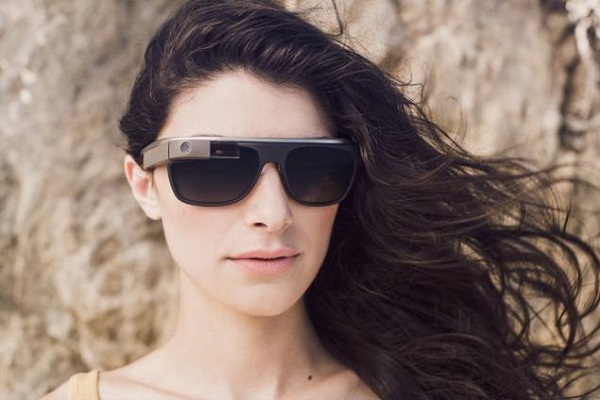
Converting body heat to the energy necessary for powering wearable devices is not that far-fetched of an idea, according to a team of South Korean researchers.
The battery life of Google Glass and other wearable devices is definitely their greatest downside. Until now, whoever owned a wearable was stuck with two options: either he charged the device wherever he could (more than once a day, in some cases), or he could carry a power bank with him, along with frustrating cables. This takes away from the pleasure of wearing a wireless device. The ideal solution would be to find a source that could transmit energy wirelessly to the wearable, but until such a thing is invented, the fiberglass-based thermoelectric (TE) generator developed by some South Korean scientists remains our best option.
Byung Jin Cho, a professor of electrical engineering at KAIST (Korea Advanced Institute of Science and Technology), explained just how flexible this TE generator really is: “There are no changes in performance even if the generator bends upward and downward for up to 120 cycles.”
Further down the line, Cho also detailed the structure of the device that could change the life of anybody using wearable tech: “The TE generator has a self-sustaining structure, eliminating thick external substrates (usually made of ceramic or alumina) that hold inorganic TE materials.”
Cho also emphasized the elements that bring novelty in the field of energy generators: “The glass fabric itself serves as the upper and lower substrates of a TE generator, keeping the inorganic TE materials in between. This is quite a revolutionary approach to design a generator.”
Unlike inorganic-based TE generators, which are very rigid, heavy and take up a lot of room, the one invented by these South Korean researchers (which is organic, as it is based on glass) is very light and flexible, leaving very little to be desired.
By the looks of it, this thermoelectric generator could be not only an ideal source of energy for wearables, but also for other mobile devices such as smartphones. The whole concept might need to be adapted for that, as smartphones are known as more power hungry than smart glasses and the like.
The only thing that I hope is that no one gets the idea that people could be turned into massive power banks anytime soon, as that would be The Matrix all over again.
Be social! Follow Walyou on Facebook and Twitter, and read more related stories about how Google Glass could help people with Parkinson’s and Vodafone’s Power Pocket that uses body heat to power phones.
Google Glass Could Make Life Easier for People with Parkinson’s
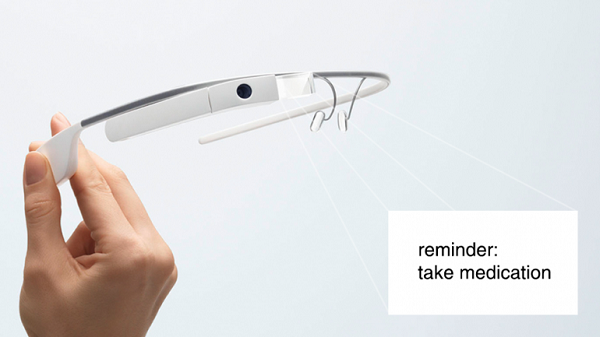
Researchers at Newcastle University conducted a study on several volunteers and reached to the conclusion that smart glasses in general, and Google Glass in particular, could
Judging by the following images, one could say that all that Google Glass does to help people with Parkinson’s is remind them when it’s time to take their medication. However, one must first realize what the main symptom of this medical condition is before making such shallow assumptions. After all, Google Glass could help anyone suffering from a health problem that requires daily medication by displaying reminders, but it’s the inability of people with Parkinson’s to properly use touchscreens that makes smart glasses so great for them.
A group of scientists at Newcastle University worked with a group of volunteers aged between 46 and 70 to find out how Google Glass could make their lives better. All the apps used by the volunteers on the smart glasses were specifically tailored to meet each person’s needs and lifestyle. The five headsets used by the University for this studied had been donated by Google with the sole purpose of conducting research.
Lynn Tearse, a volunteer on the study, pointed out that “People would probably say you can do all these things on a smartphone but actually, with Parkinson’s, negotiating a touch screen is really difficult.”
On the other hand, Roisin McNaney, a PhD student, stated that “People with Parkinson’s are already coping with so much and one of the main causes of social isolation is the stigma around behaviors such as drooling and tremor which they have no control over.”
Dr John Vines, one of the researchers who conducted this study, expressed his enthusiasm regarding the way people with Parkinson’s adopted this new technology: “What was really encouraging from this early study was how well our volunteers took to the wearable technology and the fact that they could see the potential in it.”
Even the basic features of Google Glass, namely placing calls and sending text messages using voice commands, could prove to be life-saving for people with Parkinson’s, considering how hard it would be for them to dial numbers or type words on a touch keyboard. It will be interesting to see what other uses will researchers find for Google’s smart glasses.
Be social! Follow Walyou on Facebook and Twitter, and read more related stories about the remote control for Google Glass and Google Glass’ integration in the 2015 Hyundai Genesis.
Prescription Glasses Now Available for Google Glasses
The Quantified and Augmented Self
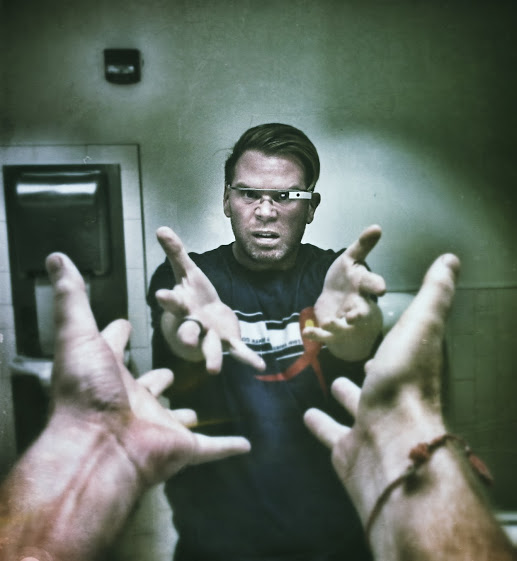
His motion is all tracked. His meals are logged. When he wakes up, he knows how long he was in REM sleep. He is, the most connected man in the world.
Mankind currently takes part in this study of averages. We refer to these average metrics as medicine, academics, fitness, labor, etc. Look up your symptoms on WebMD and you’ll find out what the average person typically has when they have similar conditions. Take any standardized test, and you’ll be told where you fall compared to the general collective.
But what about you?
Where should you fall? Does your body react the same way to spicy foods as everyone else? What should your resting heart-rate be? How much is your labor worth? How intelligent are you really? Most of these questions have been answered in the past by taking snapshots of millions of different people, usually during doctors appointments–blood pressure, weight, height, etc–and then comparing that data to the averages found to from everyone else’s personal data.
We are now in a place in history where these metrics can be defined by the individual. Instead of knowing where we fall compared to others, we can collect enough data to know ourselves, instead of this massive conglomerate of collective averages.
Leading the charge in this effort is the Quantified Self and individuals like Chris Dancy. Chris Dancy has been dubbed “The Most Connected Man in the World.” He is wearing 3-5 tracking devices at any given time, often more. He tracks his heart-rate, his skin temperature, his sleep, his eating, and his activity level.
Chris doesn’t just stop at biological tracking, though. He tracks everything he does all day–from using the toilet to using social media (not the most drastically different tasks)–in Google Calendar. This lifestyle has helped Dancy lose 100 pounds and significantly increase his access to his own data by participating in what he refers to as “knowledge lockering.”
Dancy records and saves details of everything. If he were to want to recall a conference call he was on last month, he would be able to pull it up in evernote and know what decibel he was speaking at and what his heart-rate was at any given moment during the call.
In a time when many people are unsure about wearables such as Google Glass or Samsung Gear, Dancy is plowing full speed ahead, confident it is the future of productivity. He believes that if companies don’t start tracking more employee metrics, the employees themselves will begin collecting this data for their own competitive reasons.
The workforce is slow moving, though so such changes may be a long way off, but many may find his arguments for an “augmented self” to be very persuasive. There is definitely a backlash, though, and not everyone will be accepting of technology playing such a central monitoring role in our everyday life.
We have already seen discrimination against people wearing Google Glass, causing comparisons to be drawn to the fictional story of the Deus Ex video games that take place in a dystopian world where cybernetic enhancements are commonplace, but very socially divisive.
Such a world is years away, but those comparisons definitely help point out important questions that will need to be answered before everyone becomes as “augmented” as Chris Dancy, or even moreso. We are getting closer and closer to replacing human function with prosthetics for amputees, but it is inevitable that the prosthetics will eventually be stronger and more capable than the original limb.
For now, most of us can be content with simple self quantifications like steps, sleep, and food, but as technology advances, it may become way easier–and more necessary–to look more like Chris Dancy, just so we can keep up.
Be social! Follow Walyou on Facebook and Twitter
Read more on Walyou, Google Docs Puts More Power in Your Hands With Add-ons, iOS 7 Brings Some Small, But Significant, Improvements



